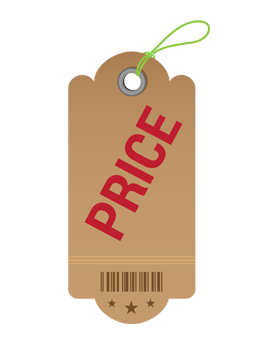How to Price Your Mobile App
- Best Practices
- News & Notes

With the right skill set, mobile app development could become your next full time job. Over the past few years the app business has virtually exploded creating a unique business niche to potentially earn profit. But as an app developer, how do you effectively turn your app into income? There are several different factors to consider when devising a pricing strategy.
In-App Purchases and “Freemiums”
Do you plan on initially charging the customers to purchase the app or will you let them download the app for free and then make in-app sales to turn a profit?
In-app purchases are expected to dominate the app business in the coming years. In-app purchasing is the buying of digital goods or services within your app; examples would be purchasing a new outfit for an avatar, unlocking new levels in game, or subscribing to a weekly magazine. People overwhelmingly choose to install free apps versus apps that charge up-front fees. Utilizing the concept known as “freemium”, where users can download the app for free, but then are charged for in-app content or to upgrade to a more advanced version of the game, has proven to be effective and it is the fastest growing business model for app monetization. The idea is to build up a fan base so loyal that they are willing to make additional purchases to enhance the app.
Cost-Oriented Pricing
How much did it cost you to build your app? How much of a profit do you want to make?
These are things to consider when utilizing cost-oriented pricing for your app. This typically means marking the app’s price up a certain percentage over the cost of the app’s production and maintenance. The cost-oriented method of pricing is a practical strategy because it at the very least makes sure all your expenses are covered.
Demand-Oriented Pricing
How much did it cost you to build your app? How much of a profit do you want to make?
You can get an idea of the demand for your app by looking at the demand for similar apps in the marketplace. You can also test the demand for your app by setting your app at a higher price in the marketplace and if sales are not met at the higher price you can adjust to a lower price.
Value-Oriented Pricing
How much value does this app have for your customer? How much is this value worth monetarily?
Value-oriented pricing is effectively used when the perceived value of the app is immensely higher than the actual cost of producing the app. It works by estimating the value of the app to the user and then basing a price on that value.
Competitor-Oriented Pricing
What are your rivals charging? What is your app offering that gives it an edge over competitors?
The app marketplace is an extremely competitive arena with hundreds of new apps becoming available daily. If you are planning on using competitor-oriented pricing strategy your app needs to have something that sets it apart from the competition, whether it is providing excellent customer service or offering more features at lower prices. You will then select a price based around those factors.
Other Things to Keep in Mind When Pricing Your App
You may have to experiment with different pricing methods and price points before finally finding one that works.
It’s better to start out at a higher price point (but don’t overprice) and then lower your price if sales are not met or if users are unhappy.
Review and consider consumer feedback through their reviews and comments to determine if they see the value of the product reflected in the price.